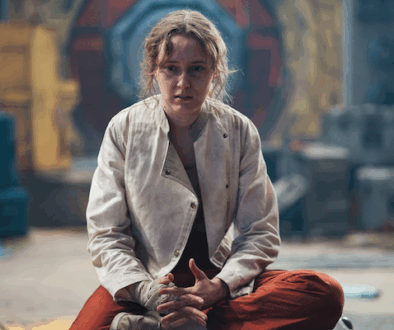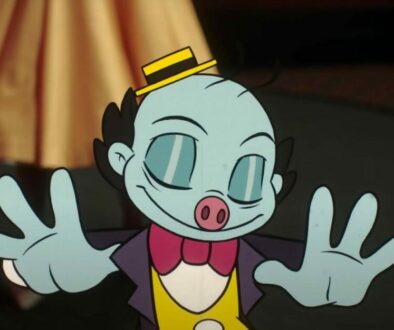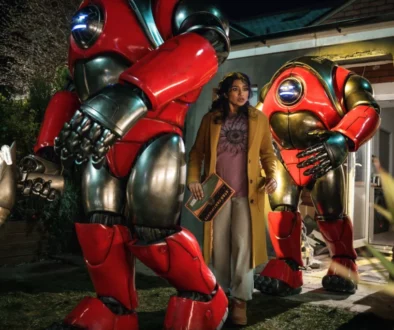A Witness To Its Own Myopia
One of the most fascinating figures in William Blake’s mythology is Ahania, the Emanation of Urizen. Like all of the Emanations, she provides the feminine aspect of a concept, in this case reason and the intellect. Where Urizen is a tyrannical figure of single vision and Newtons sleep, deriving absolute and universal law from precise and mathematical measurements and using it to ensnare the world in the net of religion, Ahania represents pleasure and curiosity – the carnal urge to discover and understand. Her separation from Urizen is what dooms him to his fall; her eventual reunion with him his redemption and a fundamental part of Eternal salvation.
Jonathan Blow’s second game, the would-be masterpiece The Witness, attempts to be an extended hymn to Ahania. Its purpose, as Blow stresses in interview after interview, is to explore the experience of learning and discovery. His mechanism for this – indeed the defining mechanism of the game – is a maze puzzle. The basic form is simple: trace a line from a starting node (a big circle) along a path to an ending node (a small rounded nub at the end of a line). The variations are numerous, with the game ultimately having several hundred iterations of this puzzle type of varying difficulties, arranged on panels across a sizeable island to explore.
There is genuine elegance to how this unfolds. Observe the progress of the opening area. You begin at the dark end of a tunnel, an illuminated door ahead and above you. You walk up to it, and find the literal simplest form of the game’s puzzle, and the game gives you one of its handful of actual instructions as it suggests pushing X to attempt the puzzle.

You trace the line, the door opens, and you get a second door.

Which opens into this courtyard.

And when you go to investigate that panel up ahead, it’s a souped up version of the first two doors (shown here at the moment of solution).

Solving it causes the wire coming out of it to ostentatiously illuminate, and you can trace it to a couple other panels of growing complexity, and finally to gate with this panel to the right of it.

A bit of poking at it reveals that you can’t complete the maze through the black bars (what a surprise), but if you trace the other wires you can find panels that will lift the bars, allowing you to complete that maze and open the gate.
Obviously the game gets harder. Indeed, it will in the very next area, which we’ll look at in a moment. But it’s worth explicitly highlighting the step-by-step education given here. Indeed, of particular note is the second puzzle – the little L-shaped path that comes between “trace a line” and “here’s a maze with dead ends.” The truth is that essentially no player actually requires both it and the initial straight line puzzle as preparation for the mazes. As an education in how the game works – which is obviously what this is, being an initial area of a game and all – it’s going ostentatiously slowly. But there’s a larger education going on here; the progression actively focuses the player on the act of being educated, in effect teaching that this will be a game about teaching.
Here’s the next bit of intro area. There’s a straightforward path that eventually comes to this fork:

And on the left you find a door with this on it.

Which is a heck of a lot of weird symbols that don’t mean anything. And if you try to solve it, you’re supremely unlikely to get anywhere. But if you take that other path and look at that row of panels, you’ll find a sequence of puzzles that starts with this

and another with puzzles like this.

Again, the teaching here is really overt. The first set teaches you that you’ve got to segregate black and white squares into their own regions. (And some subsequent puzzles fine-tune that, doing things like clarifying that you can have multiple regions of the same color, but no regions with both colors.) The second set ends up teaching you that you have to trace a line through all the hexagonal dots. And if you want, armed with that knowledge, you can go back and solve that earlier puzzle.
These mechanics add up and play off of each other quite heavily. Not too far into the game you’ll eventually encounter a building with this on the front door:

And it’s actually not that long into the game before you’ll have learned that the stars have to be divided into regions containing exactly two of them, and that the L-shaped squares have to be segmented into regions shaped like them (or, more accurately, regions that could be covered with no overlapping by all of the shapes within them). And each of those mechanisms have a bunch of further details – for instance, the fact that the Ls are angled means that those regions can be rotations of the shape shown (if the blocks were parallel to the grid they couldn’t be rotated). And there are sequences like these that teach you the precise rules on how regions containing multiple blocks interact.
As for the stars, eventually you get puzzles with loads of different color stars, and you’ll learn that unlike the squares, there’s no problem with having multiple colors of star in the same region just so long as there are always exactly two of them. Which leads to puzzles like this, on the door one building over from that one.

Except that, funny thing, that puzzle isn’t actually solvable with the information contained within this essay (as you can tell from the fact that there are only three purple and red stars), because there’s a whole other rabbit hole involving optics and what happens when that first door opens and makes it so that you can look through its yellow-tinted glass at the second door. Which brings us to the matter of environmental puzzles, a category that begins quite early in the game when you encounter this tree

and eventually progresses to where you have to find vantage points like this to reveal the solution.

And for the most part, all of this is exquisitely well clued, and clued in ways that invite you to study the cluing and appreciate the sheer level of nuance that can be extracted from this mechanic. It’s not easy by any measure – you’ll find yourself stumped and stumped often. But it’s both fair and elegant, which is pretty much the criteria for a good puzzle.
That, however, is just the game mechanic; it’s not the game. The game is about the exploration and unraveling of the uninhabited island upon which all of this happens. If you’re going “you mean like Myst” right now then you’re not alone, and Blow’s made the comparison himself, but there’s more to it than just that. For one thing, Myst is ultimately about a plot-based mystery: what happened to this island. The Witness, on the other hand, really can’t be said to have a “plot” in any conventional sense. There is no explanation for why the island is populated by seemingly petrified people. There is no explanation for how you came to the island, nor account of your eventual departure. And there is certainly no explanation of who built an elaborate mechanism that fires laser beams from across the island at a mountain summit when certain mazes are solved, eventually causing the mountain to open and revealing a vast system of catacombs beneath. These are not even, in any substantive sense, mysteries within the game. The player may ask them, but the game gives no indication whatsoever that they are questions of any interest. Audio logs are scattered across the island, but they don’t contain any plot information; just a myriad of quotations about intellectual curiosity, Buddhist detachment from the desires of the self, the nature of science, and the like. (An early, short one is the Einstein quote, “of all the communities available to us there is not one I would want to devote myself to, except for the society of the true searchers, which has very few living members at any time.”)
Nevertheless, the island is central to what the game is. It’s what Blow opted to emphasize in the closest thing the game had to a trailer, a trio of “long screenshots” featuring 2-3 minute pans across the island that emphasize its scope. Here’s the third and most majestic of them.
But the macro level of the island is in many ways its least interesting element. Instead it is the small intricacies of the island that the game hinges upon. Some of this exists on the level of construction and transition – the often tremendously elegant ways in which sections of the island connect and interact. But the real charms are often tiny and intricate bits of construction in which disparate elements of the island, from particular vantage points, line up to produce surprising effects. This does not just include things like the “look at the panel through a specific set of branches to find the correct solution” puzzle above, but a multitude of intricate easter eggs dependent on the precise perspective of the player. For instance, this rock formation that, when viewed from a ledge across a cove from it and reflected in the water, reveals an image of a human figure praying.

There’s also a whole class of hidden environmental puzzles players will eventually stumble upon when they notice that the familiar paths they’ve been tracing on panels all game appear in the landscape as well. Sometimes these are obvious things that jump straight out at you, such as a small path that leads to this view but has no apparent purpose, at least until you look closely at that drain. (The hole in the building is also one, but not solveable from this perspective – the path has to be a single color.)

But there are other subtler ones, such as this one, which looks obvious in the screenshot, but disintegrates with just a little movement as the rocky outcropping with the brown bushes separates from the water many feet below, leaving a clear curve that’s nevertheless not a path. Descend closer to the water and the rocks forming the first bend will separate as well, leaving a vaguely circular pool hinting at a path, but no clear sense of what to do. (And note that the vantage point from which the puzzle is solveable is a non-trivial walk from the actual pool.

In other words, The Witness is, perhaps unsurprisingly, about the act of looking. Which circles back to its status as a hymn to Ahania – a celebration of the basic act of discovery. Except what, exactly, is discovered? The intricate mechanisms of the island and the splendidly detailed and expansive language of the puzzles, yes. But these things are, notably, both self-evidently and ostentatiously designed objects. To discover them, in other words, is to contemplate their creation and logic – to ask not just how they work, but why they are the way they are, and to ask it in such a way as to take for granted that there is, in fact, an answer.
And so Urizen comes at last to reassert himself. Indeed, the famed description of him from the start of The Book of Urizen, “Self-clos’d, all-repelling,” could, if one wanted to be slightly cynical, fairly describe the hermetic and at times infuriatingly difficult nature of The Witness. But even if one doesn’t want to be snarky about it, there’s a tension here between the enthusiastic rhetoric of freeform exploration and discovery and the singular vision that The Witness represents. One is put in mind of seminal new media theorist Lev Manovich’s argument that “interactivity” is largely a myth, and that to treat new media as interactive is “to mistake the structure of somebody else’s mind for our own.” Likewise, the idea that The Witness is a celebration of “true searchers” or whatever is to mistake the structure of Jonathan Blow’s mind for the fundamental truths of the universe.
And indeed, in Blake at least, Ahania spends most of her time getting completely and utterly screwed by Urizen. The Book of Ahania opens with an image of Urizen consuming her as she weeps. Her other main appearance, in The Four Zoas, is the one where her restoration redeems Urizen, but even there her joy at being reunited with Urizen strikes her dead, and she’s revived in a Persephone-like state whereby she’s alive in the spring and summer months and dead in the autumn and winter.

To be clear, I’m not suggesting this is a good thing. Indeed, it’s part and parcel of the phallocentrism that is undoubtedly the biggest structural weakness of Blake’s mythology. But Ahania’s position is strange even compared to her fellow Emanations, none of whom suffer anywhere near as elaborately as her. And this reflects the terrifying power that Urizen holds within Blake’s mythology. There is nothing that terrifies him more than the singular and all-encompassing vision that Urizen represents. And this is reflected in the way in which Ahania – the positive and optimistic side of the reasoning intellect – never gets the space to be an alternative, remaining only a squandered hope.
And in many ways The Witness serves to demonstrate the degree to which Urizen can pervert and corrupt Ahania. Because for all that it strives for something genuinely beautiful and challenging, the infuriating truth is that it’s a fairly clever iPhone game strung out among a bunch of infuriating moments of trying to find the pixel-perfect perspective that renders something solvable. And yes, the worst offenders – the environmental puzzles – are entirely optional, but they’re far from the only problems. Significant sections of the game are based around the same sort of “OK, I know what I have to do but I can’t get the camera to line up exactly right to do it” logic.
There are always moments when the alternative shines through – pots in the game where a particularly clever bit of structure reveals itself in an utterly charming way, or audio logs that manage to offer a genuinely moving and intriguing perspective – a lengthy one narrating this Russell Schweikart quote springs to mind as a moment where I felt genuinely and profoundly invested in the game’s aesthetic. But for every one of those there’s a dozen moments of frustratedly poking the control stick around trying to get your perspective just right. Or, in what is perhaps the game’s most stunning perversity, an hour-long video log (there’s six of those too, unlocked by inputting paths hidden within vaults like the one with that squares and dots puzzle at the start into a panel hidden in the catacombs beneath the windmill) that consists of this lecture by Infocom developer Brian Moriarty narrated over a video consisting of nothing but a solar eclipse transiting across a black screen for an hour. At the end of which the sun finally reaches the edge of the screen where you can use it to solve an environmental puzzle.
Suffice it to say that eating Ahania alive is probably a much quicker and more merciful way to kill all urge towards discovery and wonder.




March 4, 2016 @ 4:16 pm
Well, now I know what my next essay will be about.
March 4, 2016 @ 7:36 pm
Phallocentrism in Blake, I hope.
March 4, 2016 @ 11:17 pm
You wish!
No, I was just thinking recently, having devoured both Braid and Witness, on the heels of Undertale, that you were right in predicting I might find Witness more to my liking on account of my personal esoteric interests, or something to that effect. And then I forgot all about it, until you posted this essay.
So thank you for helping me to remember. 🙂
March 4, 2016 @ 9:40 pm
I’m generously trying to keep my thoughts on this beautiful, interesting and ambitious work of art separate from my feelings on this fractally infuriating piece of pretentious dogshit.
March 5, 2016 @ 1:52 pm
I must admit that I did find myself wondering at times during play (and I am still early enough into the game not to have hit too many exasperation points) exactly how long it will be before an Escape Room makes it onto the Turner Prize shortlist.
I would note that I am sensing more of a “plot” to The Witness than I expected, but many pieces I have read suggest that this may simply be projection – which is, of course, part of the intent. Certainly it’s obvious that it’s nothing specific, on the scale of Myst, or even The Talos Principle (which I think is much better at teaching, although that’s probably because it has far less to teach – and is much less interesting anyway.) But I still feel driven to find out. Which is also, of course, part of the intent.